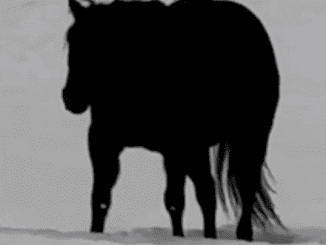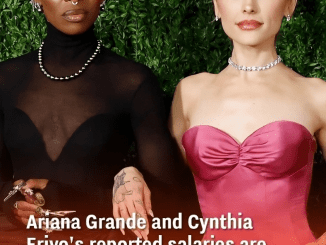Here’s a brain-teasing challenge that’s as fun as it is frustrating—in the best way possible. You’re looking at two images of a vibrant boutique scene, where three stylish women stand chatting among racks of colorful clothes and shoes. At first glance, the scenes look identical. But don’t be fooled—15 subtle differences are hiding in plain sight.
Think you can spot them all without peeking at the answer? This is the perfect puzzle to test your attention to detail, your patience, and even your visual memory. Get ready to engage your brain and sharpen your focus. Let’s dive in!

Why Spot-the-Difference Puzzles Are So Addictive
These puzzles may seem simple, but they challenge your brain in all the right ways. You’re forced to scan, compare, and question what you see. They improve concentration, visual perception, and memory recall—all while being fun and satisfying.
The best part? Each correct difference you find gives a little rush of accomplishment. And the more you do, the better your brain becomes at catching even the tiniest discrepancies.
Common Mistakes That Trip Up Most People
If you’ve tried puzzles like this before, you know how tricky they can be. Even if you’re looking closely, your brain can gloss over small changes, especially when the image is colorful and detailed.
Here are a few reasons people often miss differences:
- Color overload: When everything is bright and bold, minor color shifts are easy to miss.
- Focus fixation: You get stuck looking at one part of the image and forget to scan the entire scene.
- Mirror effect: Your brain assumes symmetry where there isn’t any.
- Speeding through: You rush to find differences without scanning carefully.
The key? Slow down. Use a methodical approach. Don’t just look—observe.
Video : Find the differences and comment below.
Step-by-Step Strategy to Spot All 15 Differences
Let’s take a guided walk through this puzzle together. Start from the top and work your way down. Here’s how to methodically find all 15 changes:
1. Hat on the Left: In the top image, the yellow hat on the left has a green band. In the bottom one, the band is blue.
2. Blue Dress on the Left: In the top picture, it has a yellow belt. In the bottom, the belt is gone.
3. Pink Bow on the Left Woman: It’s missing in the bottom image but visible in the top one.
4. Necklace on the Left Woman: In the top, she wears a necklace. In the bottom, it’s gone.
5. Pink Paw Print Dress on Hanger: Switched to a turquoise heart in the bottom image.
6. Sunglasses on Middle Woman: Present on her head in the top image, missing in the bottom one.
7. Earrings on Middle Woman: They’re visible in the top picture but absent in the bottom.
8. Phone Case Color: Her phone is turquoise in the top image but blue in the bottom.
9. Handbag Design (Middle Woman): The strap pattern is different in the two images.
10. Price Tag Sign: In the top, the sign says “999$” and in the bottom, it reads “BEAUTY”.
11. Necklace on Right Woman: It’s missing in the top image but present in the bottom.
12. Glasses on Right Woman: She wears them in the top image but not in the bottom one.
13. Earrings on Right Woman: Visible in the top, missing in the bottom.
14. Green Blouse Detail: The sleeve stripe changes from blue in the top image to yellow in the bottom.
15. Purple Shoes on Bottom Shelf: A pair is missing in the bottom image that’s present in the top.

Did you catch them all? If yes, your observational skills are next-level. If you missed a few, no worries—this is about sharpening your brain, not scoring a perfect 15 every time.
What This Puzzle Teaches You About Detail-Oriented Thinking
These differences might seem like small tweaks, but they’re a powerful exercise in attention and focus. Being detail-oriented is useful beyond puzzles—it helps in your daily life, from proofreading documents to remembering faces or noticing changes in your environment.
Think of this puzzle as a fun workout for your brain. The more you train, the faster and sharper you’ll get.
Why It’s Worth Sharing (And Competing Over!)
This is the kind of puzzle that’s more fun with friends. Challenge someone in your family or post it on your social media feed with the caption: “Can you find all 15 differences? Bet you can’t do it without zooming in!”
Video : 【Hard Spot the Difference】 Challenging Spot the Difference Brain Game
You’ll be surprised how competitive and fun it becomes. And the best part? It’s screen time that actually improves your cognitive skills.
Conclusion: Don’t Just Scroll—Train Your Brain
This fashion-themed puzzle isn’t just cute—it’s clever. It gives your brain a real challenge while keeping things playful. Whether you spotted 5 or all 15 differences, you gave your eyes and mind a solid workout.
And remember, every puzzle you try helps you train your focus, your memory, and your ability to spot what others miss. So next time you see a spot-the-difference game, dive in and sharpen that eagle eye.
Drop your score in the comments. Did you find all 15? Miss any obvious ones? And if you loved this puzzle, stay tuned—we’ve got more visual challenges that’ll keep your brain buzzing and your eyes sharp.


